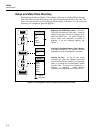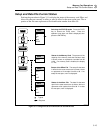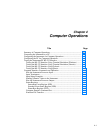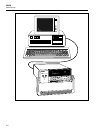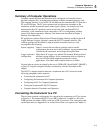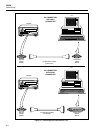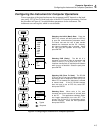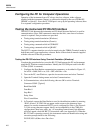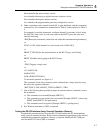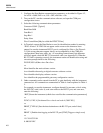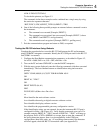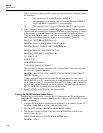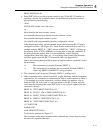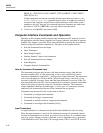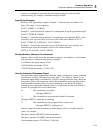
2635A
Users Manual
4-6
Configuring the PC for Computer Operations
Operation of the instrument from a PC always involves software, either software
supplied with the instrument (Starter) or software developed by the user (GWBASIC,
QBASIC or Quick C). Since the PC COM port is set up by the operating software, there
is no separate configuration procedure.
Testing the Instrument/PC RS-232 Interface
The RS-232 link between the instrument and PC should be tested before it is used for
communications. Since DOS commands cannot test the link, some form of software
control is required. Four procedures are provided:
• Testing using terminal emulation (Windows)
• Testing using terminal emulation (Generic)
• Testing using commands while in GWBASIC
• Testing using commands while in QBASIC
The RS-232 computer interface can also be tested using the TERM (Terminal) mode in
both Starter and Logger applications software. Refer to the technical manuals supplied
with the software for the test procedures.
Testing the RS-232 Interface Using Terminal Emulation (Windows)
Complete the procedure below to test the RS-232 link between the PC and instrument
using the PC Windows terminal emulator. Identify the PC COM port used for the RS-
232 link (COM1 is assumed).
1. Configure the Data Bucket communication parameters, as described in Figure 4-2,
for bAUd = 9600, PAR = no, CtS = OFF, and Echo = On.
2. Turn on the PC, start Windows, open the Accessories menu and select Terminal.
3. Open the Terminal Settings menu and select Communications.
4. In Communications, select the following, then use OK to exit to Terminal:
Connector COM1 [Typical]
Baud Rate 9600
Data Bits 8
Stop Bits 1
Parity None
Flow ControlNone
5. In Terminal, request the Data Bucket to send its identification number by entering:
*IDN? <Enter>. If *IDN? did not appear on the screen as the characters were
entered, be sure the instrument RS-232 port is configured for Echo = On (Figure 4-
2). If the wrong characters appear, there is an incompatibility in the COM port
configurations (baud rate, parity, etc.). If everything seems normal, but characters
still don’t appear, check the RS-232 connection cable (see Appendix D). When the
RS-232 link is operating correctly, the instrument returns an identification string and
execution prompt similar to the following:
FLUKE,2635A,0,Mn.n An.n Dn.n Ln.n
=>



